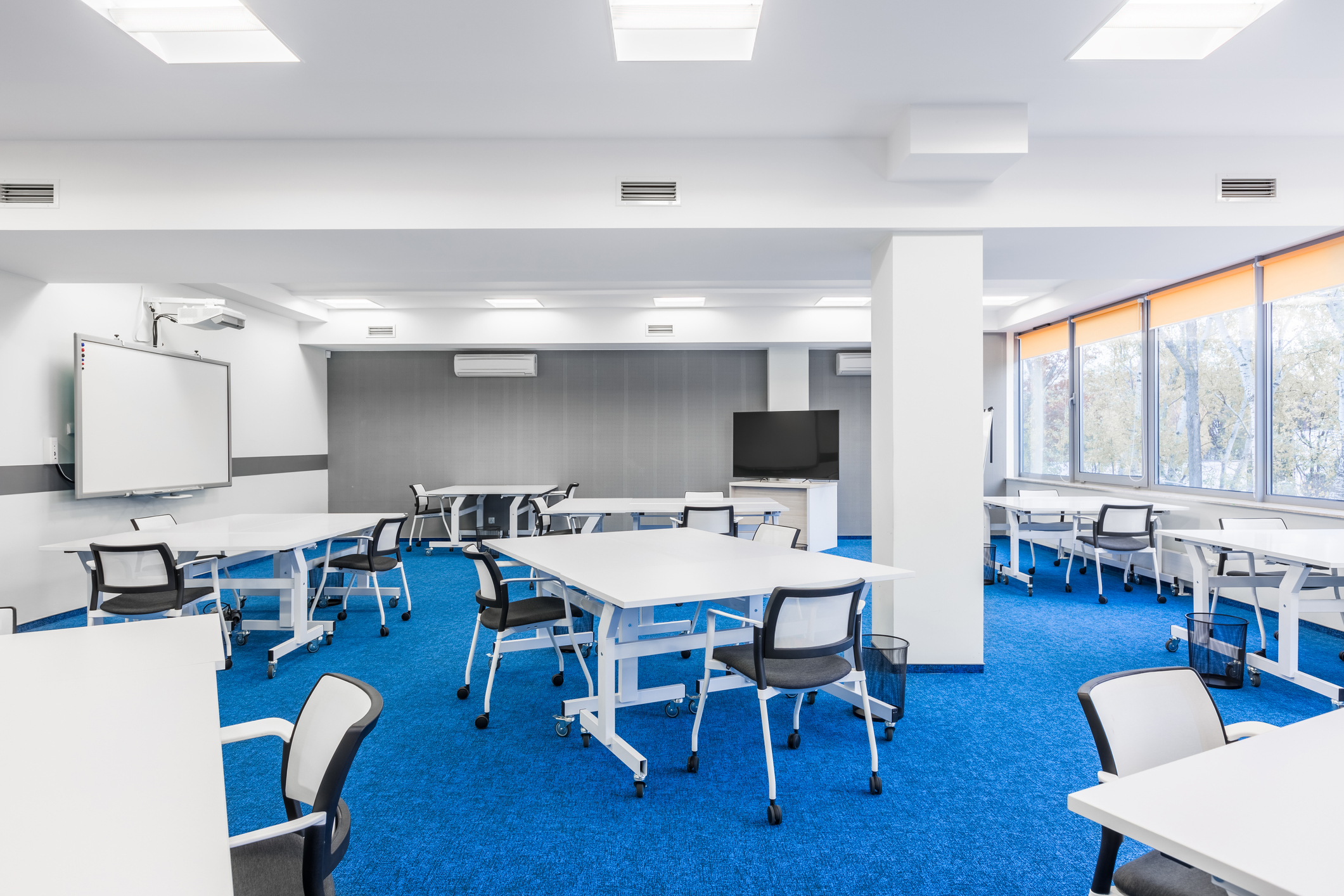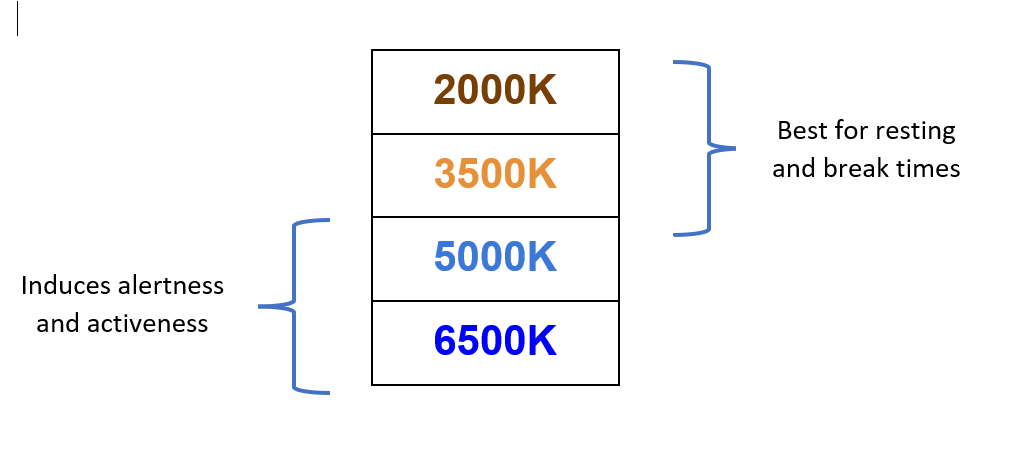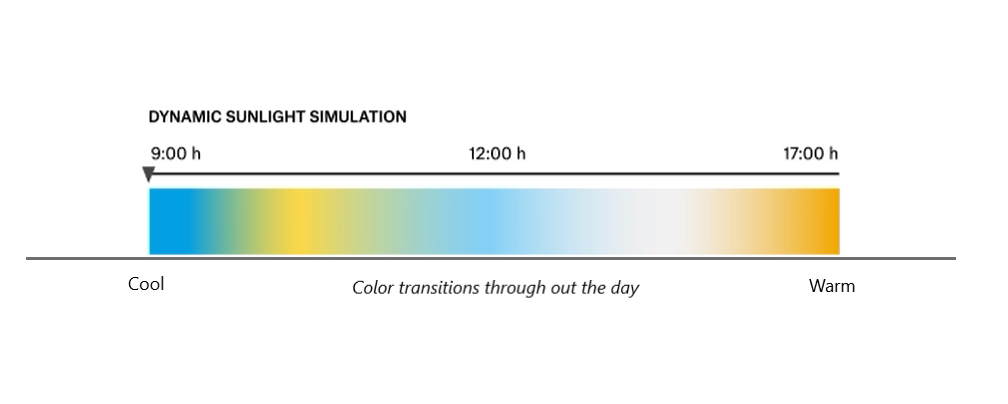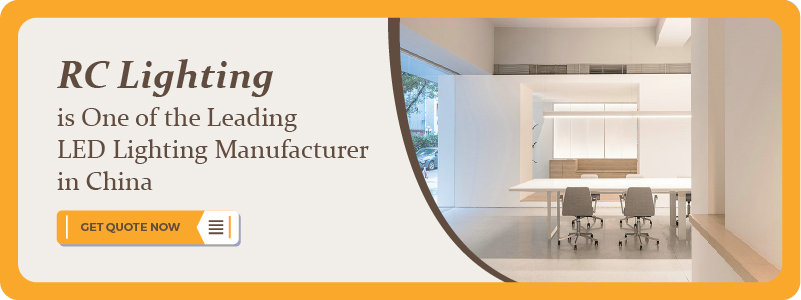Why is School LED Lighting Important?
There are several reasons schools should switch to LED lighting instead of the traditional incandescent and fluorescent lighting. Let us explore a few benefits of LED lighting for school lighting systems.

Increased Productivity
LED lights have proven to significantly improve productivity and mental cognition as they offer a complete spectrum control over dimming and the color temperature of the lighting.
LED lights offer full-spectrum light that is only otherwise provided by the sunlight. Full-spectrum lights mimic the daylight, which improves mental cognition by keeping conditions like Seasonal Affected Disorder. Moreover, it also triggers hormonal responses such that the circadian rhythm is regulated. Circadian rhythm refers to the 24-hour sleep-wake cycling of the body clock.
Enhanced Attention Span
Concentration is the key to producing better learning outcomes. The study of various medical aspects of education and the study of conditions like attention deficit hyperactive disorder has led to a greater emphasis on students’ attention and concentration span.
LED lights can be effectively used in this case as researchers have concluded that classroom lighting with cool color temperatures plays a vital role in enhancing students’ attentiveness.
Better Light Quality
Poor quality lighting and visual conditions give rise to several visual problems. The most common visual problems arising due to poor quality lighting are discomfort glare and disability glare.
While discomfort glare refers to the painful sensation in the eyes, the disability glare reduces visibility.
The incidence of such problems is relatively high in the case of fluorescent lighting. Such visual issues are detrimental to the students’ health and performance and equally harmful to the teaching staff and the school administrators.
On the other hand, due to their superior quality and better control over the light emitted, there is a marked reduction in visual problems with LED lighting. The optical performance and thus the pupils’ overall performance significantly improve with the usage of LED lighting in education facilities.
Significant Financial Savings
LED light systems consume up to 50-90% less energy when compared to traditional incandescent and fluorescent light sources. The marked reduction in energy consumption offers more significant cost savings as the energy expenditure in terms of electricity bills is significantly reduced.
Moreover, LED lights have a longer lifespan than fluorescent lights and other outdated lighting technology.
There is no need to frequently change LED fixtures, as with fluorescent bulbs and tubes.
Thus, the LED lights prove to be further cost-effective as the energy and maintenance costs are also markedly reduced.
In the UK, the massive savings on the energy bill could pay the monthly salary of a qualified school teacher and significantly reduce the incidence of laying off team members due to budget shortfalls.
Better Lighting Usage
LED Lights are uni-directional, which means that a better illumination of working surfaces and study desks can be achieved through LED lights. Thus, it allows the reaping of maximum benefits from the LED fixtures.
Safer Lighting Solutions
Fluorescent lights carry a significant health risk due to harmful contaminants like Mercury and Polychlorinated Biphenyls (PCBs).
The Environmental Protection Agency of the United States classifies PCBs as potential carcinogens with cancer-causing potential. The PCBs found in fluorescent lights can harm the nervous, immune, and endocrine systems.
Mercury is also considered a toxic element. It produces UV light and, in turn, UV radiation, which can be detrimental for tissues, particularly for skin and eyes. Moreover, if a light fixture containing mercury breaks, the building has to be evacuated until all traces of mercury have not been removed due to the hazard potential of mercury contamination.
LED lights also contain elements, but none of those elements is considered toxic, and neither do they carry any significant health hazards. Although the chances of breakage of LED fixtures are negligible, however, in case of breakage, it can be quickly cleared, and there is no pre-requisite of vacating the premise. Thus, LED lighting is safer for use and has several health benefits.
Can be Tuned to Accommodate Various Teaching Methods
LED light fixtures to offer greater control over the light output as these fixtures are dimmable, and the color temperature can be adjusted based on user requirements. Thus, LED fixtures’ highly integrated and flexible lighting solutions can be used to accommodate the various moods and spectrums of teaching.
It has been proven that the mood alterations are resulting from the changes in light output aid a great deal in making the lessons more interactive and better retention of the lessons. Thus, LED lights may also translate into better academic performance in this manner.
Better in Terms of Aesthetics
The LED lighting fixtures offer great flexible lighting solutions with better aesthetics. Unlike the traditional lighting fixtures, the LED lighting fixtures may be used as suspended, recessed, or flush-mounted and can be used on both ceilings and walls. Thus, a more aesthetically pleasing lighting plan can be achieved with LED lights.
What is Color Temperature Lighting Best for Schools?
Understanding the color temperatures of lighting is essential to determine which one works the best for school. Generally, lights with over 5000 K possess a bluish hue and are called cool colors. On the other hand, warm colors refer to yellows, oranges, and reds and have lower color temperatures around 2700–3000 K.
Cooler color temperatures force the brain into a state of high responsiveness, while warmer color temperatures are more suitable to induce a sense of relaxation and calm setting.

The color temperature of LED lights for classroom lighting varies based on the purpose of the lesson and the level of education of the pupils. Due to the greater control offered by LED light fixtures, it is possible to change the color temperature of the lights.
Smart Control:
Smart LED technology creates dynamic lighting solutions. Now you can automatically adjust the lights to change colors according to the transition times in schools. For example, LEDs can automatically switch to cooler tones (4000K-5000K). Lights can transition to warmer colors (2700K).

Generally, lights with cooler color temperatures, such as white and blue ones, are most suitable for classroom use. They shall force the body into a state of mental attentiveness and a better concentration span.
The color temperature of natural daylight is around the range of 5000-6000 K. On average, LED lights with a color temperature of 4200 Kelvin are most suitable for classrooms. However, it is better to use LED lights with a color temperature of about 5000 K for classrooms dedicated to test-taking.
What Color Light is Best for the Classroom?
The white and blue color LED lights closely mimic the natural daylight, which forces the brain into a state of mental alertness. The close to natural light produced by LED fixtures have several benefits for the student’s physical, physiological, and cognitive performance and the teaching staff.
More specific color light requirements for different classrooms are mentioned as follows.
Color Light for Primary School Classrooms
The children in pre-school and elementary level classes are primarily hyperactive and energetic. A cooler light will further increase their energy level, which may prove to be counterproductive in classrooms. Thus, a comparatively warmer color light is more suitable for such classrooms.
Color Light for Middle School and High School Classrooms
Middle school and high school require students to sit for back-to-back lessons and frequently appear for tests. A bright white light is most appropriate for use in middle and high school classrooms, especially in test-taking environments, which is the key to ensuring the high performance of students.
How Much Lux is Used in a Classroom?
| Area | Lux requirement |
| Classrooms for evening classes | 300-500 lx |
| Workshops (detailed task lighting) | 500 lx |
| Corridors, entrance, hallways, lobbies | 80-300 lx |
| Atria | 400 lx |
The Lux measures the amount of light output in an area. It allows accurately measuring the total visible light and the intensity of illumination in a given area. The minimum illumination level required for classrooms is 300 Lux. However, a higher illumination level is preferable in classrooms where a more heightened focus is needed.
On average, an illumination of 300-500 Lux is preferable for classrooms.
Do LED Lights Improve Focus?
Yes. Research has proven that LEDs create artificial daylight by mimicking the natural light, which pushes the body into a state of mental alertness and high responsiveness. It has been further proven by Brickenkamp’s d2 test of attention, which accurately measures the performance of an individual in different working conditions.
Visual discomfort caused by traditional incandescent and fluorescent lighting may adversely affect students’ mood, behaviors, and performance with learning disadvantages. Thus, LED lighting provides better solutions for educational facilities for students with special needs.
Cherokee Elementary School in Scottsdale, Arizona, was a significant improvement in special education students with autism by switching to LED lighting.
Conclusive Remarks
Given the plethora of benefits of LED lighting in schools, it is vital to switch from traditional lighting to LED lights in all educational facilities and school districts to build a more productive learning environment.
Why Buy LED Lighting from RC Lighting?
RC Lighting is a professional LED Lighting manufacturer in China. The company has professionally trained staff that gives a complete walkthrough of all the available lighting options before recommending the best-suited ones for your budget and given requirements.
Moreover, RC Lighting also tailors school LED lighting solutions according to your needs. The input from the lighting experts at RC Lighting proves to be instrumental in educational building projects.
Send an inquiry today and embark on your energy cost-saving and conducive learning environment journey with RC Lighting!





